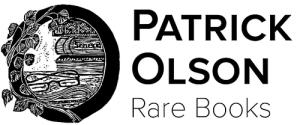October 2010 |
True to Type: Why Letters are a Labor of Love
The Guardian has a fascinating excerpt from Simon Garfield's new book, Just My Type: A Book about Fonts.
From the piece...
Fonts were once known as founts. Fonts and founts weren't the same as typefaces, and typefaces weren't the same as type. In Europe the transition from fount to font was essentially complete by the 1970s, a grudging acceptance of the Americanisation of the word. The two were used interchangeably as early as the 1920s, although some whiskered English traditionalists will still insist on "fount" in an elitist way, in the hope that it will stretch their authenticity all the way back to Caxton, the great British printer of Chaucer. But most people have stopped caring. There are more important things to worry about, such as what the word actually means.
From the piece...
Fonts were once known as founts. Fonts and founts weren't the same as typefaces, and typefaces weren't the same as type. In Europe the transition from fount to font was essentially complete by the 1970s, a grudging acceptance of the Americanisation of the word. The two were used interchangeably as early as the 1920s, although some whiskered English traditionalists will still insist on "fount" in an elitist way, in the hope that it will stretch their authenticity all the way back to Caxton, the great British printer of Chaucer. But most people have stopped caring. There are more important things to worry about, such as what the word actually means.
In the days when type was set by
hand, a font was a complete set of letters of a typeface in one
particular size and style—every different a, b and c in upper and
lower case, each pound or dollar sign and punctuation mark. There would
be many duplicates, the exact amount dependent on their common usage,
but always more Es than Js. The word is derived from "fund", the fund
(amount) of type from which the letters are selected. These days a font
refers simply to a particular typeface, which may have 10 or 20 fonts,
each weight and style on the page a little different. But in common
parlance we use font and typeface interchangeably, and there are worse
sins.
Definitions should not cloud our appreciation of type, but some classifications can be useful in understanding the subject's history and usage. Just as it is entirely possible to have a pleasant afternoon in a gallery with no knowledge of art theory or an artist's place in the firmament, one can wander around the streets admiring typefaces on signs and shops with not a care for their history. But it may increase our love of them if we know who made them, and what they were aiming for.
Definitions should not cloud our appreciation of type, but some classifications can be useful in understanding the subject's history and usage. Just as it is entirely possible to have a pleasant afternoon in a gallery with no knowledge of art theory or an artist's place in the firmament, one can wander around the streets admiring typefaces on signs and shops with not a care for their history. But it may increase our love of them if we know who made them, and what they were aiming for.
















